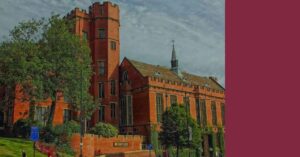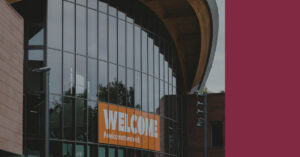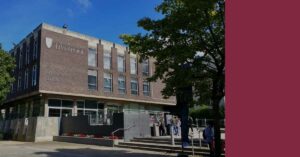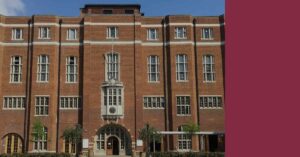When applying to Medical School it is important to consider what teaching style the school offers.
The different teaching styles is likely not something that you will be aware of prior to applying to Medical School.
From traditional learning to problem-based learning and case-based learning there is a lot for you to consider.
But what do each of these teaching styles actually mean and how are they used by UK Medical Schools?
What Are The Different Medical School Teaching Styles?
There are four key different teaching styles, that are offered at the different UK Medical Schools.
These are:
What is important to remember when considering these different teaching methods is that everyone learns in different ways and Medicine is a big and complex subject, so there is not a “best” method of teaching.
And as such it is truly down to what you feel fits best with how you learn.
Not sure where to start with your Medical School application?
Get the advantage in your application with expert support from 6med’s Complete Bundle. Access everything you need for success instantly when you sign up.
UCAT.Ninja
UCAT.Ninja

MEDICINE MASTERY BUNDLE
Not sure where to start with your Medical School application?
Get the advantage in your application with expert support from 6med’s Medicine Mastery Bundle. Access everything you need for success instantly when you sign up.
UCAT.Ninja
UCAT.Ninja
What Is A Traditional-Learning Medical School?
A traditional learning Medicine course consists of two or three years of pre-clinical study, followed by three clinical years.
The idea behind a traditional course is that you will learn all the scientific theory first and then apply it in clinical settings in the latter stages of the course.
The main benefit of this approach is that you will have a much firmer grounding in science, and it is therefore a suitable choice for students who are interested in unlocking the mysteries behind the science of Medicine.
Pre-Clinical Years
During your pre-clinical years, you will spend your time learning the scientific theory of Medicine and cover many different disciplines.
In what is unique to traditional Medical Schools, you will be taught in distinct scientific fields, such as Physiology and Anatomy.
The intention behind this is to provide high-quality education in clinically relevant biosciences leading to intellectually self-reliant graduates.
This approach also provides students with a stimulating and challenging learning environment where teaching is informed and enhanced by research.
When students come to the end of their pre-clinical years, they should have the knowledge and understanding of the basic principles and processes of biomedical science.
Additionally, students will have begun to develop skills in oral and written communication and in learning through curiosity, and also develop skills in listening to and dealing with patients.
Being able to exhibit this means that students should be aware of the standards of competence, care, conduct, and responsibilities expected of a member of the medical profession.
Clinical Years
Throughout the six years a student spends on their traditional course, students progressively take on greater responsibility in directing their own learning.
Clinical years support this transition by providing a mix of structured teaching sessions, supervised clinical experience and self-directed study.
Throughout the clinical years, students will build on the foundation of knowledge and skills that they acquired during their pre-clinical years. Students will develop skills, knowledge and attitudes for effective clinical practice while maintaining a spirit of enquiry and critical thinking.
Students are able to choose components which complement the core teaching allowing them to develop skills and knowledge in areas of particular interest.
This allows them to explore career interests.
Pros and Cons of Traditional-Learning
As with any teaching method, there will pros and cons to traditional learning. Below are some examples of these, keep in mind this is not a definitive list and to form your own opinions.
Pros
- Students are more likely to feel prepared for the knowledge behind medical pathology on entering clinical school.
- Traditional learning is structured to ensure that students cover a broad and thorough range of the theoretical material of the medicine course.
- Tutorials and supervisions give students a great opportunity to quiz experts on anything they want, which comes in handy with the essay writing to be done in traditional courses.
Cons
- Traditional Medical Schools have a “hands-off” approach until later years of study, which may make learning theory less engaging.
- May be more difficult to link between different disciplines (anatomy, physiology, biochemistry, etc.)
- May not foster the teamwork and communication skills that other teaching approaches do so well.
Which Medical Schools use Traditional-Learning?
Only two Medical Schools in the UK offer a traditional teaching course. It possibly is not a surprise which two that is.
In the initial intake of students for the 2021-22 academic year, Oxford admitted 190 students, with Cambridge admitting 315. This means out of the 10,353 students admitted, just 505 students were accepted onto a traditional teaching course – that is just under 5%!
Do keep in mind, that just 2% of applicants to Oxford and Cambridge are accepted.
How do these Medical Schools use Traditional-Learning?
Cambridge
Pre-Clinical (Years One, Two, and Three):
The first three years are known as the ‘Tripos’, ultimately leading to a BA qualification. Major areas of study include ‘Biology of Disease’ and ‘Neurobiology and Human Behaviour’. Students specialise in a specific area in the third year of study, including core-scientific and non-core-scientific disciplines.
Clinical (Years Four, Five, and Six):
Years four, five, and six introduce students to clinical attachments. Each year starts with an introductory course, informing learning objectives for the academic term. Year four focuses on core clinical practice, while years five and six focus on specialist and applied clinical practice.
Oxford
Pre-Clinical (Years One, Two, and Three):
The first three years at Oxford are pre-clinical, focussing on the science that underpins medical practice. Modules include ‘Organisation of the Body’, ‘Physiology and Pharmacology’, and ‘Biochemistry and Medical Genetics’, among others. Teaching is delivered through a mixture of lectures, college tutorials, practicals, and self-directed study.
Clinical (Years Four, Five, and Six):
Years four through six are taught in the Oxford University Hospitals NHS, with some teaching taking place in Northampton, Swindon, and Reading. Emphasis is placed on the use of evidence-based Medicine in patient care. Students are able to pursue areas of clinical interest in the last six months of the course with an elective, before commencing FY1.
Check out our traditional-learning Medical School Reviews:
What Is A Problem-Based Learning Medical School?
Problem-based learning, otherwise known as PBL, is taught using small groups (usually around 8-10 students) with a tutor. What is key about PBL is that it is patient-centric and means you will be exposed to patients early in your studies.
This style of teaching was originally pioneered by the University of Manchester and has since been adopted by a number of other Medical Schools, but the level of focus varies between them. The basic structure of a PBL structure is:
- You are presented with a 'problem' or case study in small groups.
- Your group will brainstorm possible hypotheses and solutions and decide what you need to learn to solve the problem. These are your learning objectives.
- You go away and gather all the information you need. This is usually in the form of private study and ready.
- Finally, you present the findings to your group to compare notes.
Pros and Cons of Problem-Based Learning
It is important to understand the advantages and disadvantages of this teaching method, so what are they?
Pros
- By replacing traditional lectures with facultative mentoring, assertive learning, discussions, and real-life experiences it helps in promoting deep learning.
- Participating in PBL activities helps students improve their information retention and recall abilities.
- Students are introduced to open-ended questions which gives them more room for discussions, data retrieval, and more understanding of the subject matter.
- To be successful in PBL it hinges firmly on communication and interaction, which helps in building transferable skills based on teamwork and collaboration.
- The tangible context of the subject matter presented in PBL activities can make the entire learning experience more durable and profound in the long term.
Cons
- PBL takes more time and takes away study time from other subject areas. Additionally, it requires a lot monitoring and recording of the students’ performance throughout.
- Devoting too much time to PBL can create issues when students have standardised tests.
- Multiple disciplines have to be integrated so students can understand the different aspects of a situation – therefore systematic organisation and extensive research are required.
- Varying degrees of applicability and relevancy.
- As with all group working situations there is the possibility of group dynamic issues.
Example Problem-Based Learning Scenario
Being able to understand what the teaching style actually is, is only one half of it. The other, is grasping what types of scenarios may come up.
Below, is an example of what you may be faced with:
“Kerry is 20 years old and in her 2nd year at university. She has suffered from eczema since childhood but is otherwise fit and well. Recently she has developed breathing problems. She is coughing at night, often gets wheezy and gets short of breath. She recently noticed that the mould in her bedroom in her student house is getting a lot worse and is concerned that this might be causing her symptoms.
When she goes to the Student Health Centre, a diagnosis of asthma is considered. This shocked Kerry as she thought her symptoms were ‘just a bit of allergy’, and she undergoes some further assessment with the practice nurse. These tests indicate that she does have asthma. She is prescribed a couple of inhalers to use daily. Her GP emphasises that she needs to continue using the brown inhaler, even if she has no symptoms.
In addition, she was asked to identify anything that may trigger her asthma. Kerry mentions the mould in her bedroom and also that she sometimes smokes when she’s socialising. The practice nurse gives her some advice on quitting smoking. Kerry knows already that she should stop; her grandad has recently been told that he has lung damage from smoking.”
The next step is to ‘activate prior knowledge’ basically meaning to discuss what you already know. Looking at the example above, you might think about what you already know about asthma.
- Does anyone know what the blue and brown inhalers are – and the difference between them?
- What do you know about smoking and asthma?
It might seem like a bit of a tedious step, but most of the time, between the group, you will find that you know a surprising amount already.
From this you will need to set your learning objectives. These should include things like:
- Anatomy,
- Physiology,
- Pharmacology,
- Social aspects.
Once you have your learning objectives, it is time to learn them through self-directed study. Afterwards, you will come back for your feedback session, and you, and your group, will present your findings.
Which Medical Schools use Problem-Based Learning?
Problem-based learning is one of the most popular teaching methods and is used by 12 different Medical Schools.
They are:
- Barts and the London
- Hull York
- Keele
- Lancaster
- St George’s
- University of East Anglia
How do These Medical Schools use Problem-Based Learning?
As already mentioned, the different Medical Schools utilise problem-based learning differently so it is important when applying to know how it will be used and if it is what you are looking for.
Barts and the London
At Barts, PBL forms a significant part of the curriculum. Groups of around 10 students will discuss medical cases to reach a diagnosis and management plan, aided by a facilitator. In addition to this, other teaching methods used are lectures, practical sessions, communication skills, project work and e-learning.
Hull York
The integrated five-year Medical programme offered by the Universities of Hull and York has PBL at its heart. The curriculum is designed around the ever-changing NHS and equips students with a strong foundation of clinical science.
Keele
Teaching is delivered through lectures, PBL, seminars, and cadaveric dissection, based around a spiral curriculum, in which core themes are revisited in increasing clinical detail each year.
Lancaster
Students attending one of the smallest Medical programmes in the UK, are taught through an integration of PBL along with clinical anatomy teaching and lectures, with clinical contact from the offset.
St George’s
Teaching at St George’s is delivered through lectures, tutorials, seminars, PBL, and clinical placements, with anatomy taught through dissection and prosection.
University of East Anglia
At UEA, you will use PBL techniques to apply your learning to virtual scenarios and real patients. This practical, hands-on way to hone your knowledge allows you to develop the relevant practical and communication skills in both simulated and real environments.
University of Edinburgh
Edinburgh highlights its academic rigour as a key feature of its medical curriculum. Using the PBL approach helps integrate concepts and reinforces the study of the fundamentals of Medicine in context.
University of Exeter
PBL is just one of the ways teaching is presented at the University of Exeter, with the five-year Medical degree designed to provide a unique learning experience in healthcare, emphasising the importance of multi-professional patient care in clinical practice.
University of Glasgow
At the University of Glasgow, PBL is undertaken in Phase 1 (term 1 of year 1) and Phase 2 (term 2 of year 1) and follows a spiral curriculum. The course is split into four phases with gradually integrated clinical exposure from the beginning of the course.
University of Manchester
The pioneers of PBL, the University of Manchester is the largest Medical School in the UK. The course is taught through full-body dissection, alongside prosections, skeletal materials, and anatomical models. Teaching is delivered through PBL, lectures, practical classes, and early clinical placements.
University of Plymouth
Plymouth uses PBL methods to nurture critical thinking and leadership. This is with the aim to serve you in not only becoming an effective doctor but also to support you in realising your ambitions.
University of Sheffield
Plymouth uses PBL methods to nurture critical thinking and leadership. This is with the aim to serve you in not only becoming an effective doctor but also to support you in realising your ambitions.
Check out our PBL Medical School Reviews:
Confused by the Medical School Application Process?
Our Complete Bundle provides support for your Personal Statement, UCAT and Interview and guides you to a successful application.
Personal Statement Crash Course
Personal Statement Crash Course

MEDICINE MASTERY BUNDLE
Not sure where to start with your Medical School application?
6med’s Medicine Mastery Bundle provides you with the best support for your Personal Statement, UCAT and Interview, ensuring you will earn your offer.
Personal Statement Masterclass
Personal Statement Masterclass
What Is A Case-Based Learning Medical School?
Case-based learning (CBL) is similar to, but not exactly the same as, PBL. While it also involves small-group and self-directed learning, it places greater weight on learning within clinical settings.
Increasingly favoured by Medical Schools, as a modern way of teaching Medicine, CBL has shown to aid students with retaining information better as they can relate what they learn to real-world medical cases.
Many students like this approach as it goes hand in hand with cases seen in students clinical placements.
Pros and Cons of Case-Based Learning
On the whole, the pros and cons of are very similar to those for PBL listed above.
An additional advantage could be that it trains you to think like a doctor by analysing clinical cases from early on in your medical education.
Example Case-Based Learning Scenario
When faced with a case-based learning there are three key elements that will be presented, they are:
- They are real or based on real-life situations.
- They require students to carefully study and research, to understand the scenario.
- They encourage the user to develop multiple perspectives based on material from the case.
Case-based learning uses virtual ‘trigger’ cases to stimulate interest in a particular area of the curriculum. Working in small groups over a short period, a case is used to think about the knowledge and skills needed and why these might be useful.
Groups are led by tutors with training and expertise not just in the subject and content of the learning module but also in the skills and processes involved in facilitating this type of learning.
Each case is used to combine learning from all these sources and the two-week period is topped off with a wrap-up session where students review what they have learnt and understand how it will apply to their future practice.
Which Medical Schools use Case-Based Learning?
As was the case with PBL, the Medical Schools utilise the teaching style in different ways.
How do These Medical Schools use Case-Based Learning?
Anglia Ruskin
Case-based learning is used by Anglia Ruskin during ‘Phase Three’ of their course, running through years three and four. Students are provided with a series of ‘100 core clinical problems’ introduced to help you understand an integrated view of Medicine.
Cardiff
The primary mode of delivery in years one and two will be via case-based learning, where you will be supported in small groups by a trained facilitator. You will learn basic and clinical science via the theme of the ‘Chronological Life Course’. Each unit of study consist of a series of patient cases typically lasting about two weeks.
Glasgow
You will use CBL at the University of Glasgow during ‘Phase Three’ of the course which covers the first half of the third year and covers clinical systems with a focus on pathophysiology.
Liverpool
At the University of Liverpool learning of medical sciences is enhanced by the clinical context of a systems-based approach. The development of understanding of clinical practice is supported by a ‘just in time’ model of academic weeks that relate to each clinical placement and case-based learning.
Systems-based courses are the recommended approach by the General Medical Council where instead of teaching anatomy and physiology etc. as separate courses, the idea is to join them into systems.
This means, you would take a bodily system such as the circulatory system and consider the anatomy, physiology, biochemistry, pharmacology, pathology of it.
What Is An Enquiry-Based Learning Medical School?
Enquiry-based learning starts by posing questions, problems, or scenarios rather than simply presenting established facts or portraying a smooth path to knowledge. This process is often assisted by a facilitator.
You are in charge of your own learning and at the centre of the learning experience. This means the emphasis is on you learning rather than the lecturer teaching. Students will identify and research issues and questions to develop their knowledge or solutions.
Enquiry based learning is very similar to problem-based learning but with a stronger focus on empowering you to shape your learning.
Pros and Cons of Enquiry-Based Learning
At the heart of enquiry-based learning is the desire to increase engagement. Whether it accomplishes this goal depends on who you ask. As you would expect there are some pros and cons, which are generally similar to that of PBL and CBL, which must be weighed against one another.
In theory, enquiry-based learning is a perfect system that maximises engagement and gives students a chance to extract meaning and purpose from their education. However, the problem with theoretical learning strategies is they do not always stand the test of real-world application.
Pros
- With students allowed to ask questions and guide the direction of their curriculum they are going to express more significant interest in the subject matter.
- Inquisition is very much at the heart of EBL, and not only are students encouraged to asks questions, but they are told to find the answers.
- Students are taught to engage with one another, work in groups, and tackle problems together leading to greater teamwork skills.
- Research shows that elaboration at the time of learning, such as fact sharing, and conversations enhance the retrieval of information at a later date.
Cons
- With so much time dedicated to student enquiries, there is always the risk that important core topics could be left out – this in turn could hurt performances in testing.
- Some students will likely not feel as comfortable as others having to think on the spot due to feelings of embarrassment or shyness (though you would hope if that were the case, they would not choose a teaching style such as this).
- For the teachers themselves, with there being no set structure and format it means they cannot prepare properly and their ability to engage students.
Example Enquiry-Based Learning Scenario
As the work is very student focuses method, it enables students to relate EBL to the demands of their own contexts and professional commitments.
A number of key characteristics of EBL are:
- Engagement with a complex problem or scenario – that is sufficiently open-ended to allow a variety of responses or solutions.
- Students direct the lines of enquiry and the methods employed.
- The enquiry requires students to draw on existing knowledge and to identify their required learning needs.
- Tasks simulate curiosity in the students, encouraging them to actively explore and seek out new evidence.
- Responsibility falls to the student for analysing and presenting that evidence in appropriate ways and in support of their own response to the problem.
Which Medical Schools use Enquiry-Based Learning?
There are even fewer Medical Schools that use enquiry-based learning than use case-based learning, with just one school using it.
Currently, it is only Birmingham that are using this method out of the 44 Medical Schools in the UK.
How is Enquiry-Based Learning used at Birmingham?
Most of the student selected components use enquiry-based learning, where you will have to find answers to problems through your own research rather than being given information and memorising facts. This is supported by group work which develops your skills in teamwork and will provide you with the vital skills required to practice as a doctor in a lifelong learning environment.
Check out our EBL Medical School Reviews:
What Is An Integrated Learning Medical School?
If a Medical School, you are considering has not been mentioned then chances are it follows an integrated approach.
The majority of Medical Schools have now implemented this method and integrate what was previously learnt at the pre-clinical and clinical stages to provide a seamless course.
Teaching methods can include problem-based learning and practical clinical skills for example.
The new integrated approach also encourages early patient contact and self-directed learning. Much of the teaching has a basis in lectures supplemented with tutorials and your own self-directed work.
How Can I Tell Which Teaching Style Suits Me?
The question of which teaching style is a best fit for you still remains.
To put it simply:
| If you learn best by… | You should try… |
|---|---|
| Learning all the theory and then applying it practically | A traditional learning Medical School |
| In small groups with early exposure to patients | A problem-based learning Medical School |
| Placing more weight on clinical placements | A case-based learning Medical School |
| Directing your own studies and maximising your engagement | An enquiry-based learning Medical School |
| If you still are not sure how you best learn | An integrated-learning Medical School |
Conclusion
Knowing what the different styles of teaching are at Medical School is important, but so is understanding that there is not a particular one that is better than the ones.
All the teaching styles have their advantages and disadvantages, so it comes down to what you feel matters to most to you.
Whether you prefer the more formal teaching offered with traditional learning, or the ability to take control of your learning with equiry-based learning – there is an option out there for you.
Ultimately, you know best how you learn, and it is only the matter of finding the right Medical School for you.
Not sure where to start with your Medical School application?
Get full, comprehensive support for your medical school application with 6med’s Complete Bundle. Access everything you need for success as soon as you sign up.
MMI Interview Crash Course
MMI Interview Crash Course

MEDICINE MASTERY BUNDLE
Not sure where to start with your Medical School application?
Get full, comprehensive support for your medical school application with 6med’s Medicine Mastery Bundle. Access everything you need for success as soon as you sign up.
MMI Crash Course
MMI Crash Course




























